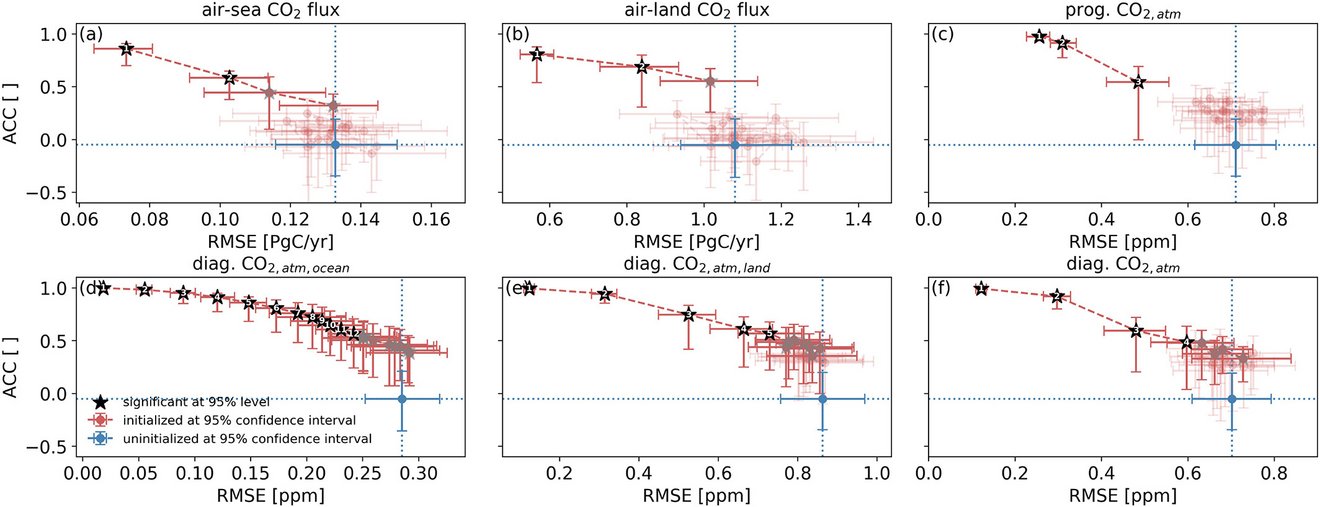Multi-year forecasts can predict natural atmospheric CO2 variations

The amount of anthropogenic CO2 emissions remaining in the atmosphere varies each year because land and ocean efficiency to take up parts of those emissions depends on the current state of the climate. For example, in warm and wet years, trees grow stronger and take up more carbon from the atmosphere. Therefore, the remaining atmospheric increase is less strong than in cold or dry years. Currently, under strong and increasing CO2 emissions, this variability due to the carbon sinks is not obvious to pick up from the Keeling curve, a daily record of atmospheric carbon dioxide concentration.
Spring and Ilyina addressed the predictability problem using numerical Earth System simulations in an idealized prediction framework. They found out that CO2 fluxes of both land and ocean are predictable for two years [Fig. a,b]. But the atmospheric CO2 concentration is a cumulative quantity: CO2 fluxes from last year are still visible this year. Therefore, the authors compared the isolated effects of the land and ocean carbon sinks on the atmospheric CO2 concentration. Spring and Ilyina show that the influence of the ocean on the atmospheric CO2 concentration is predictable for more than a decade, whereas land’s imprint was only five years [Fig. d,e]. Therefore, the land carbon sink limits the atmospheric CO2 concentration predictability.
Once emissions are decreasing, predictability of the atmospheric CO2 concentration becomes even more important as policy-makers review the past emission reductions and future emission pledges every five years.
Original publication
Spring, A., & Ilyina, T. (2020). Predictability horizons in the global carbon cycle inferred from a perfect-model framework. Geophysical Research Letters, 47: e2019GL085311. doi:10.1029/2019GL085311.
Contact
Aaron Spring
Max Planck Institute for Meteorology
Email: aaron.spring@mpimet.mpg.de
Dr. Tatiana Ilyina
Max Planck Institute for Meteorology
Email: tatiana.ilyina@mpimet.mpg.de
